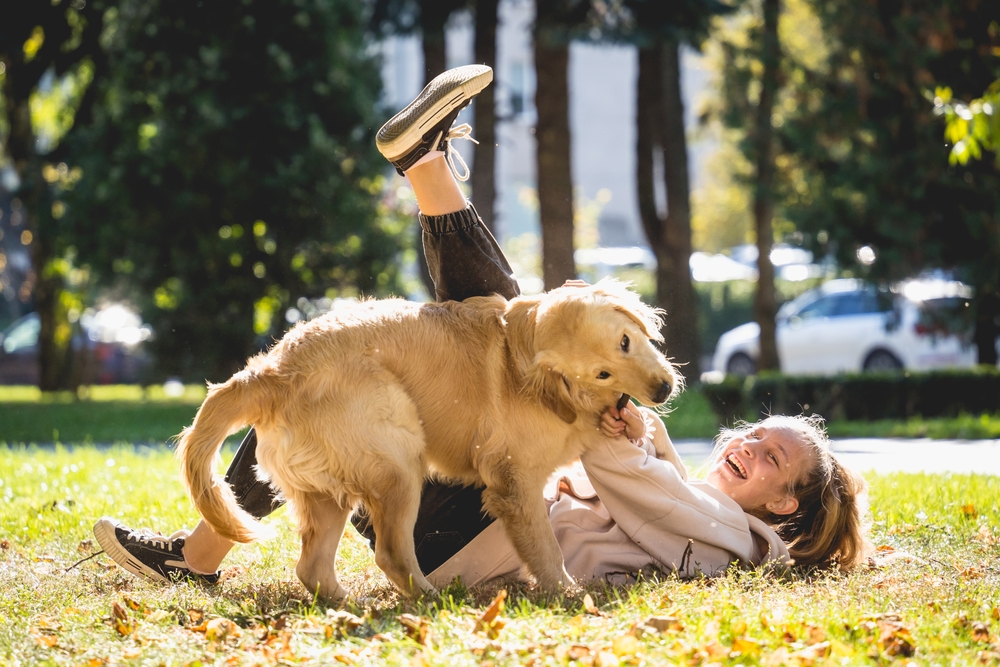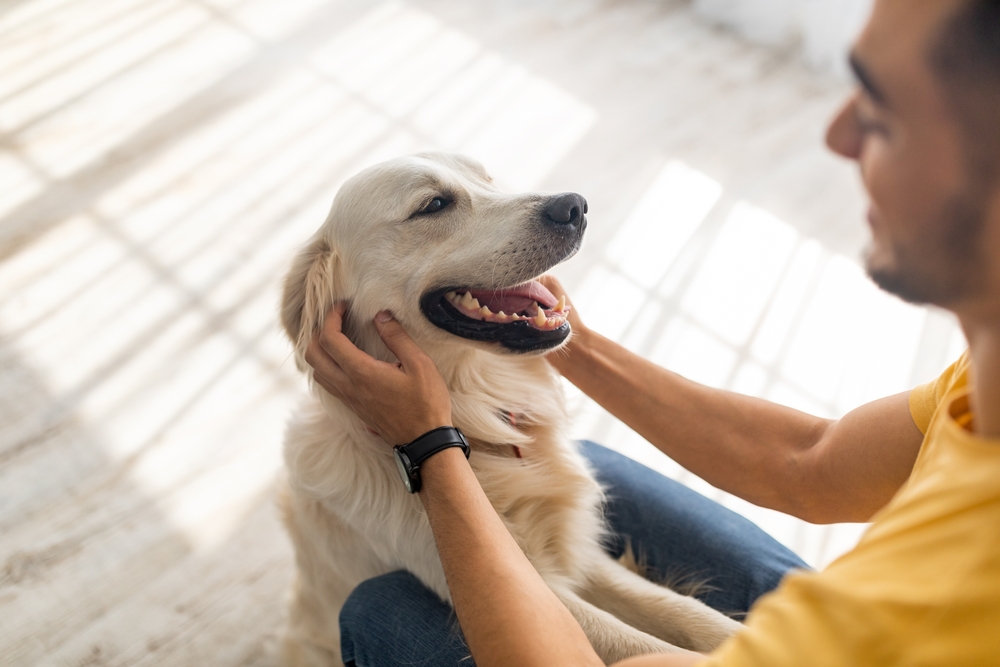Help! My Dog Lunges at My Face When We Play
Updated on May 07, 2024

“Help, my dog lunges at my face when we play.” Does that sound like you? Well, that’s the question we received. The dog does this when playing with her pet parent, but it can be painful sometimes. Now what?
If that sounds like a situation you are dealing with, help is here.
My Dog Lunges at My Face
A. Lunging and mouthing are typical ways for dogs to play with each other. This play behavior is especially common in puppyhood, but can continue into adulthood. Certain breeds are more likely to jump up toward the face during play, rather than focusing on the paws, chest or side as other breeds may do.
Lunging at the face can be dangerous and frightening, not only for you but especially for other people, particularly if there is any possibility that the behavior is not play-related. If you suspect that your dog’s behavior is aggression– or fear-related, seek professional help immediately, starting with your veterinarian.
All featured products are chosen at the discretion of the Vetstreet editorial team and do not reflect a direct endorsement by the author. However, Vetstreet may make a small affiliate commission if you click through and make a purchase.
Change Your Behavior First
Even if your dog is lunging and mouthing only in play, the behavior can be surprising and painful. Behavior that starts out as play can escalate into something more problematic over time. The way you respond to your dog when she lunges and mouths can have a major impact on whether the behavior escalates or stops.
I recently worked with a dog who started out lunging and mouthing at his owner in play. The owner’s response to this behavior was to scream, throw her arms up in the air, and push the dog down every time he jumped up to mouth her.
As a result, his excitement level and the firmness of his mouthing increased over time. While the dog wasn’t aggressive, he was certainly overstimulated, and the situation was becoming more serious. Jumping up and mouthing had become his go-to response whenever he was overly excited or anxious. I worked with the owner to teach her dog alternative behaviors to replace the jumping and mouthing, which also helped him learn to settle himself when he was overstimulated.
For your dog, most of the fun of lunging and mouthing at you in play comes from your response. Pulling back, screaming, and fast movements, such as pushing your dog down, are all behaviors likely to get her even more excited. The more understated and dull your reaction, the less fun the behavior becomes. If your dog jumps up or mouths your skin, freeze in place.
Slowly cross your arms and look away until your dog calms down. Instead of reacting to the behavior you want to eliminate, lavish praise and rewards when your dog is playing appropriately.
Pro Tip: If you’d prefer a more hands-on approach with a dog trainer from the convenience of home, consider the MasterClass program with Brandon McMillan. The affordable program teaches you what you need to know about dog training with positive reinforcement.

Teach Your Dog to Play Nicely
Your dog is much more likely to get overly excited when you’re down at her level, either sitting, kneeling or bending over, which means that it is important to train her to be calm when you’re on her level. Sit in a chair or on the ground and ignore all her attempts to jump, mouth, bark or be rambunctious. As soon as she begins to act calm, either by sitting or laying down, immediately reward her.
You can reward with praise and petting or food treats, depending on what your dog finds most enjoyable. When she settles down, mark with a “good” and give your reward. Reward periodically as long as she remains in her settled position. If your dog stands up or gets excited, stop the interaction by freezing in place and slowly crossing your arms and looking away.
Stay in this position and ignore your dog until she settles again. As your dog learns to settle, practice kneeling, bending over, sitting on the couch, sitting on the floor, or getting into any other position where you’re close to her level.
Be careful not to inadvertently encourage jumping and mouthing when you play with your dog. Avoid roughhousing. Dogs often have a difficult time keeping calm during this type of play, and harder mouthing and jumping toward the face often ensues. Instead of roughhousing, play with your dog using a toy.
But be sure to hold the toy close to the ground during play to encourage your dog to keep all four paws on the floor. When you lift a toy up high in the air, your dog is more likely to jump to get it, which reinforces the jumping and lunging that you are trying to avoid.
Chase games, including fetch or running after a moving object, such as a Chase-It or stuffed animal tied to a rope, are other appropriate and energetic types of play that can redirect attention to a toy. Make sure your dog is chasing the toy and not you, though.
Provide your dog with structured play sessions throughout the day; use a cue that tells her it’s time to play, such as consistently saying “let’s play!” before you bring out a toy. This helps your dog discern when you’re up for playing, and when you’re not available.





